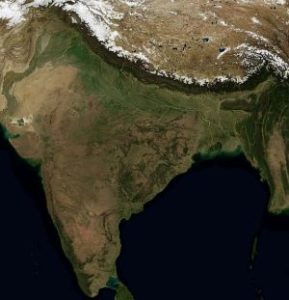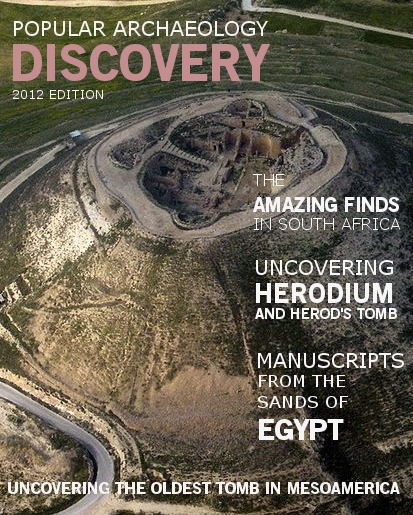
The emergence of modern humans in South and East Asia has long been a topic of heated debate among scholars. Nonetheless, many scientists today have generally reached a consensus that the initial foray of anatomically modern humans out of Africa reached the Levant (Middle East) during improved climate conditions within what is called Marine Isotope Stage 5 (MIS 5), or the time range between about 85,000 years ago and 130,000 years ago. However, this original thrust of human migrants is generally considered to have “failed”, in that little or no evidence has been recovered to indicate that they advanced any further beyond the Levant for a large gap of time afterwards. The massive eruption of Mount Toba in Sumatra, Indonesia during that time period is thought to have played a significant role in this. The resulting global “volcanic winter” caused by the blast, in combination with a more general global climate cooling period, essentially helped to create conditions hostile to prospects for humans venturing much beyond their African homeland for an extended period of time. The fossil, archaeological and genetic findings appear to support a consensus view that another, single population of modern humans exited Africa sometime later, around 60,000 years ago, and rapidly reached Australia by about 40 – 50,000 years ago by following an Indian Ocean coastal route. Some genetic studies have supported this scenario.
But not so fast, says Michael Petraglia, Senior Research Fellow and Professor of Human Evolution and Prehistory at the University of Oxford. He and his colleagues have conducted new excavations and earth core sampling in India that have cast a new light on the debate. Their studies have assigned a reliable date for the Toba eruption at approximately 75,000 years ago using the latest Argon-Argon dating techniques and, more significantly, even suggest that the “bottleneck” in human evolution — the near extinction resulting from dramatic ecological changes from the Toba eruption — likely did not happen. According to their analysis, the effects of the eruption were not as severe, and the ensuing decimation of the prehistoric human population was not as pronounced, as previously thought. Their recovery and examination of Middle Palaeolithic core and flake stone tools in the Jurreru River Valley of southern India and the Son River Valley in the north, including other geologic, flora and fauna evidence indicate, they maintain, a basic population continuity after the Toba eruption and an environment not radically different than the one before.
“We found the very first evidence for archaeological assemblages in association with the Toba ash”, says Petraglia. “We found Middle Palaeolithic assemblages below and above the ash indicating the technologies being used at the time of the event. When the stone tool assemblages were analyzed from contexts above and below the ash, we found that they were very similar……..We therefore concluded that the Middle Palaeolithic hominins survived the eruption and there was population continuity. This is not what would have been expected based on general theories that the Toba super-eruption decimated populations.”
Moreover, similar findings published by Christine Lane, et al. in the Proceedings of the National Academy of Sciences, the result of research at Lake Malawi in East Africa, have led to the supporting conclusion that “the eruption did not significantly impact the climate of East Africa and was not the cause of a human genetic bottleneck at that time”.*
Even more significant, although not without challenge, has been Petragia’s recovery of pre-Toba (before 75,000 years ago) Middle Palaeolithic stone artifacts in India that he suggests exhibit Middle Stone Age (280,000 – 50,000 years ago) industry characteristics found in Africa. These Middle Stone Age artifacts in Africa have, by general consensus, been connected to early anatomically modern humans. Thus from Petraglia’s perspective, the Indian Middle Palaeolithic humans could have been Homo sapiens, and not some earlier human species, as other scholars have suggested. In other words, anatomically modern humans may have exited Africa far earlier than previously thought.
“Archaeological excavations at Jwalapuram, in the Jurreru Valley of southern India,” writes Petraglia and colleagues, “demonstrate that Middle Palaeolithic hominins were present by c. 78 ka. Analysis of cores from the Jwalapuram localities indicates affinities with sub-Saharan African MSA assemblages produced by H. sapiens (modern humans)…….. While lithic technology does not provide a straightforward or definitive signature of modern human presence, in this case it does appear to necessitate that we consider the possibility that H. sapiens was present in South Asia by MIS 5a [about 85,000 years ago], if not earlier.”**
Petraglia admits that his suggestion is not the majority view, but insists that the jury is still very much out on any definitive scenario for human dispersal and evolution related to the African exit and habitation of South and East Asia, which would include India.
“What we can agree on,” he says, “is that little research in these key geographic regions has been conducted, and much more evidence needs to be collected to support or refute the different theories.”
Read a more detailed article on the subject entitled “Before and After Toba”, with images and photographs, in the September 2013 issue of Popular Achaeology Magazine.
_______________________________
* Christine S. Lane, Ben T. Chorn, Thomas C. Johnson, Ash from the Toba supereruption in Lake Malawi shows no volcanic winter in East Africa at 75 ka, Proceedings of the National Academy of Sciences, Volume 110, No. 20, June 21, 2013.
**Bovin, N., et al., Human dispersal across diverse environments of Asia during the Upper Pleistocene, Quaternary International (2013), http://dx.doi.org/10.1016/j.quaint.2013.01.008
_______________________________________________________________________________________________________________________
Read about the most fascinating discoveries with a premium subscription to Popular Archaeology Magazine. Find out what Popular Archaeology Magazine is all about. AND MORE:
 Popular Archaeology’s annual Discovery edition is a selection of the best stories published in Popular Archaeology Magazine in past issues, with an emphasis on some of the most significant, groundbreaking, or fascinating discoveries in the fields of archaeology and paleoanthropology and related fields. At least some of the articles have been updated or revised specifically for the Discovery edition. We can confidently say that there is no other single issue of an archaeology-related magazine, paper print or online, that contains as much major feature article content as this one. The latest issue, volume 2, has just been released. Go to the Discovery edition page for more information.
Popular Archaeology’s annual Discovery edition is a selection of the best stories published in Popular Archaeology Magazine in past issues, with an emphasis on some of the most significant, groundbreaking, or fascinating discoveries in the fields of archaeology and paleoanthropology and related fields. At least some of the articles have been updated or revised specifically for the Discovery edition. We can confidently say that there is no other single issue of an archaeology-related magazine, paper print or online, that contains as much major feature article content as this one. The latest issue, volume 2, has just been released. Go to the Discovery edition page for more information.
Subscription Price: A very affordable $5.75 for those who are not already premium subscribers of Popular Archaeology Magazine (It is FREE for premium subscribers to Popular Archaeology). Premium subscribers should email [email protected] and request the special coupon code. Or, for the e-Book version, it can be purchased for only $3.99 at Amazon.com.





